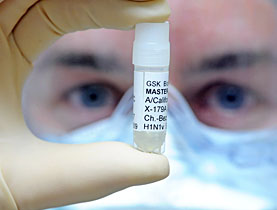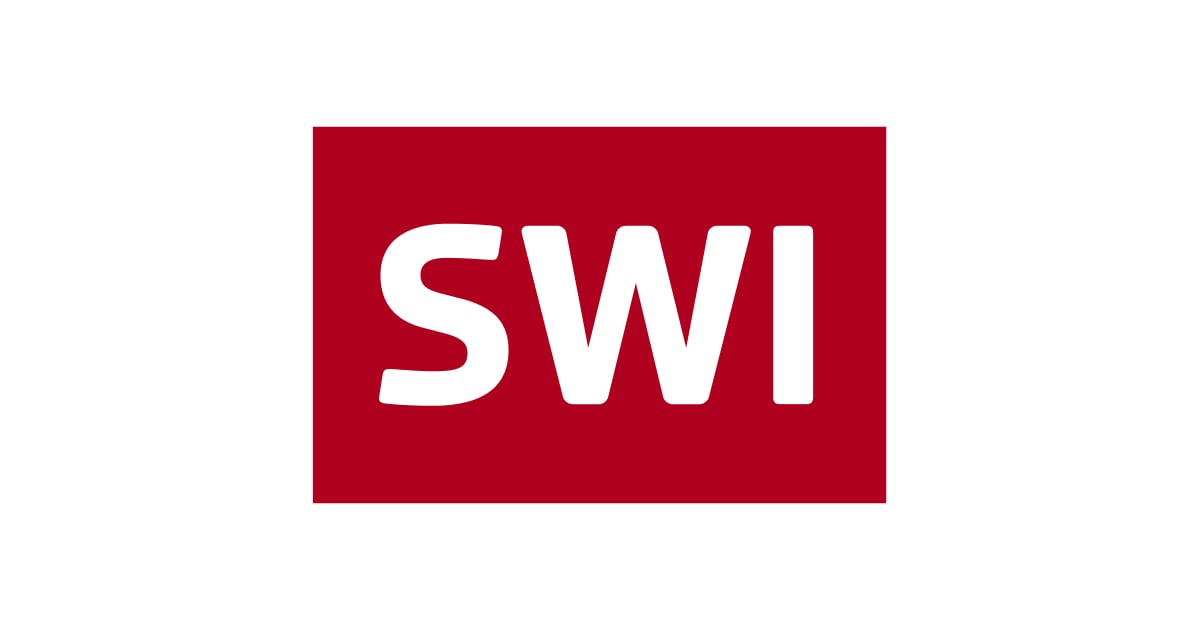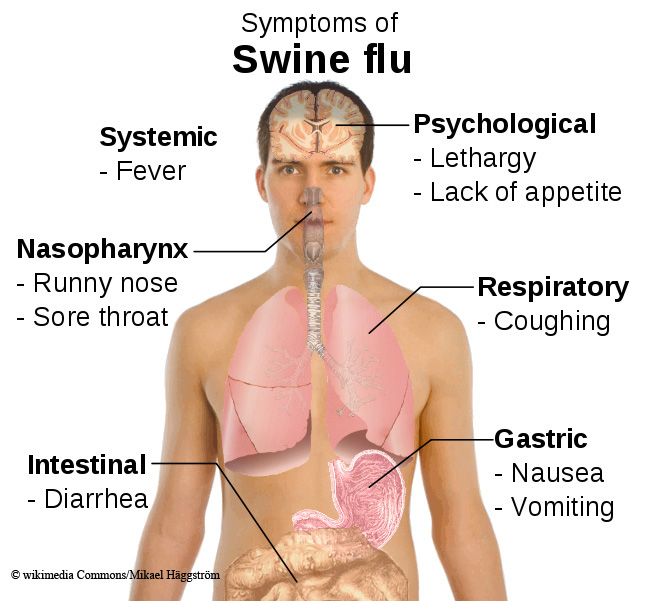Progress made on swine flu vaccine

Less deadly than initially feared, the A/H1N1 flu pandemic will soon be up against a vaccine, expected to be available between mid-October and November.
Delivery in Switzerland will be spread out between the end of September and mid-October, but the date of the first actual jabs remains open, says Claire-Anne Siegrist, president of the Federal Vaccination Commission.
Definitely between the second half of October and November, according to swissmedic, the Swiss agency for therapeutic products.
Similar to the annual fight against seasonal flu, vaccines will be first administered in Switzerland to people at risk. The US Centers for Disease Control and Prevention has said this category includes pregnant women, children younger than five and people with certain chronic conditions like asthma and heart disease.
In a second stage, a couple of weeks later, anyone wishing to vaccinate themselves or their immediate family could do so.
Pascale Boyer Barresi, a financial analyst at private bank Bordier, sees this happening from December or January.
Switzerland has ordered 13 million doses from pharmaceutical companies Novartis and GlaxoSmithKline. Novartis confirmed to swissinfo.ch that deliveries will be ready on an international level between October and the beginning of 2010.
The Basel-based firm said it could produce 150 million doses a year, mainly from its units in Germany, Italy, Britain and, from November, the United States.
So far more than 1,100 cases of A/H1N1 have been reported in Switzerland and Liechtenstein. Since July, 18 people have been admitted to hospital, some for complications arising from the flu and others among risk groups such as pregnant women.
Highly specialised
Novartis uses two techniques: the traditional method – still responsible for about 90 per cent of the world’s flu vaccines – of injecting the virus into chicken eggs, and cell culture.
This second method, which involves cells being grown under controlled conditions, is “much more profitable in terms of productivity but does require highly specialised equipment, which is expensive”, said Boyer Barresi.
“The cost price would double. I’d be astonished if they sold their vaccine at a loss – but with a limited mark-up, without doubt.”
He expects Novartis, Sanofi Pasteur, Baxter and GlaxoSmithKline to bring their respective vaccines onto the market more or less simultaneously, “having been given access to the genetic properties of the virus at the same time and possessing similar development capacities”.
These four pharmaceutical firms will share the northern markets. China and India are also looking to respond to global needs.
One dose or two?
Optimum quality is one of the criteria used by Switzerland when considering a vaccine.
Also important is the presence of an adjuvant, a chemical component used to stretch a vaccine’s active ingredient and essentially make it more efficient.
The strength of the immune response is important in determining not just that the vaccines work but how many doses people will need. Because swine flu is a new strain, many infectious disease experts have been expecting people will need two doses to get full immunity against the virus.
However, Novartis said last week that a single dose of one of its experimental vaccines appeared to protect against the virus, raising hopes that potentially tight supplies could go further when mass immunisation gets under way.
According to Novartis, people who got two injections of vaccine had a better immune response, but just one injection also provided adequate protection within two weeks of the vaccine being given.
“It is very rare for a virus to circulate only once,” said Siegrist, adding that experts were expecting one or more waves but were unable to predict when.

More
Pandemic
Young deaths
It is known that the A/H1N1 pandemic prefers winter. The southern hemisphere is coming out of winter, giving scientists a chance to draw certain lessons.
Analysing the mutations that have already occurred, scientists have shown they are all homogenous – very similar to the base cell, present in the awaited vaccines.
Regarding mortality rates, to everyone’s great relief the catastrophic predictions made earlier in the year have yet to come true.
And while nine out of ten people who die from seasonal flu are old, the over-65s appear to be immune to A/H1N1, having encountered a similar virus when young. This demographic can thus be removed from the predictions of potential deaths.
Nevertheless, according to Siegrist, Switzerland can still expect up to a hundred deaths from the pandemic – young deaths.
Pierre-François Besson, swissinfo.ch (adapted from French by Thomas Stephens)
Avoid close contact with people who appear unwell and who have fever and cough.
Wash your hands with soap and water frequently and thoroughly.
Practise good health habits including adequate sleep, eating nutritious food and keeping physically active.
Switzerland has ordered 13 million doses from Novartis.
The Swiss Federal Health Office has projected that up to two million Swiss could catch swine flu. Some 400,000 people could consult their doctor over suspected swine flu. Some 1,000 people could be hospitalized and of these 150 people would need intensive care treatment, it said.
Adults and children who are severely ill with H1N1 flu or at high risk of complications should be treated with antivirals like Tamiflu, the World Health Organization (WHO) said. But otherwise healthy people with mild flu-like symptoms need not be given the drugs to combat swine flu.


In compliance with the JTI standards
More: SWI swissinfo.ch certified by the Journalism Trust Initiative












You can find an overview of ongoing debates with our journalists here . Please join us!
If you want to start a conversation about a topic raised in this article or want to report factual errors, email us at english@swissinfo.ch.